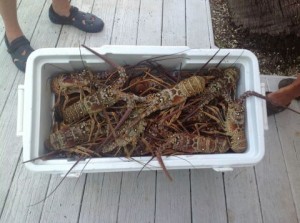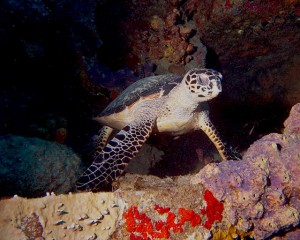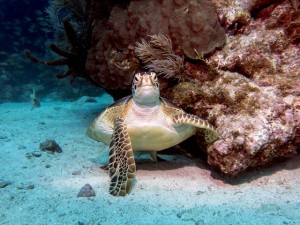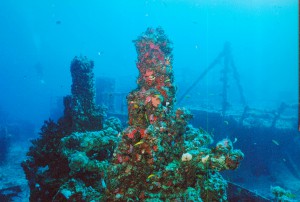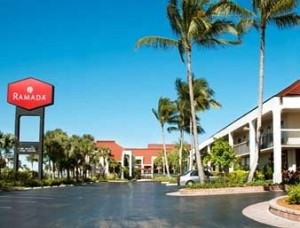A big day in several ways. The staff did swap out my tank and it made a world of difference. There are still some awkward aspects with having equipment that’s different from my own, but I’m managing. I won’t be doing all the dives, although if I don’t dive, then my husband has to be buddies with someone else. Since we are usually with some friends on dive boats, that isn’t an issue. In this case, it was important to get to know some of the other divers and as it turns out, there are three guys who take this dive trip together every two years and so they are really familiar with the sites and it’s a great match all around.
The first morning dive was good with what are supposed to be the best conditions of the week. It was my intention to miss the Shark Feed (2d dive of the morning), although I discovered afterward that their technique is different and the sharks don’t come is as close as the one that I participated in. That’s okay, I didn’t mind missing it. I did, however, see half-a-dozen sharks come over to the big boat just in case someone might have extra food.
Now, the dive after lunch was what called a “tender dive” where they took us off the large boat in the inflatables, dropped us at a point and we drifted/swam back in. Since it was in the same general vicinity as where they did the shark feed, there were several sharks cruising around. In fact, there was a moment of amusement when I realized that my husband had so many shark photos from the day that he wasn’t interested in taking any more. The truly big thing though – the biggest event so far of the dive – was that we were on the wall and I looked over to see a shark moving pretty fast. Okay, then I recognized it was a hammerhead. Not a big one – maybe eight feet, but my first hammerhead, nonetheless. I barely managed to get hubby’s attention so that he only glimpsed it and couldn’t get a photo. Now, in the diving world, if you see something unusual and don’t get a photo, there is always a fair amount of teasing from other divers questioning if you really saw what you thought you did. As soon as we got back on board though, the question was pinging around – “Did you see the hammerhead?” About a third of us did and that’s all the validation required. It really was one of those exciting moments for any diver. Naturally, those who didn’t get to see it were disappointed, but happy for those of us who did.
Meals continue to be quite good, but something different with this boat is that they have a very light continental breakfast with only fruit, cereal, and yogurt before the first morning dive, then they do a large, hot breakfast between the first and second morning dive. Most dive vessels have a continental laid out very early, then a hot breakfast about 30 minutes later before the first morning dive. I’m not sure of why this one is set up the way it is, but it works, too. Dinner was a lovely fish with risotto primevera. There was also a night dive that we passed on.
At this point, we have met and spoken with almost everyone on board, learning bits and pieces. As always, there is a mix of where divers have been and lots of stories to be swapped. I’ve chatted a bit with several of the crew – one American, by the way, and all are quite professional and have the type of personality that one usually finds in this business. It’s a formula that works and you really can’t deviate much from it. The quarters are too close to have a staff member who needs to “escape” from the guests. The constant interaction and serious lack of privacy is part of why there is a large turnover in the liveaboard business. On a dive vessel like this, you are out for a solid week and you’re “on” for 24 hours a day even if you aren’t technically on duty. A guest needs something or something happens on the boat and you have to respond immediately. Plus, you have some guests that are night owls and others that are sunrise people and they all have to be accommodated.


